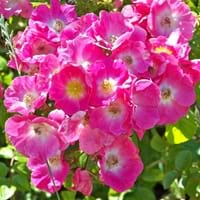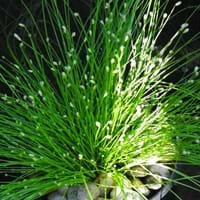Life Span
Annual and Perennial
Annual
Type
Perennial
Sedge or Rush
Origin
Hybrid origin
Southern Europe, United Kingdom, Northern Africa
Types
it is a type of rose
Not Available
Habitat
Not Available
Grassland, Humid climates, Riverbanks, Wet forest
USDA Hardiness Zone
5-8
8-11
Sunset Zone
A1, A2, A3, H1, H2, 1a, 1b, 2a, 2b, 3a, 3b, 4, 5, 6, 7, 8, 9, 10, 11, 12, 13, 14, 15, 16, 17, 18, 19, 20, 21, 22, 23, 24
7, 8, 9, 10, 11, 12, 13, 14, 15, 16, 17, 18, 19, 20, 21, 22, 23, 24
Habit
Vining/Climbing
Arching/Fountain-shaped
Minimum Width
Not Available
Flower Color
White, Pink
White
Flower Color Modifier
Not Available
Bicolor
Fruit Color
Non Fruiting Plant
Non Fruiting Plant
Leaf Color in Spring
Dark Green
Green
Leaf Color in Summer
Dark Green
Green
Leaf Color in Fall
Dark Green
Green
Leaf Color in Winter
Light Green
Green
Plant Season
Summer
Spring, Summer, Fall, Winter
Sunlight
Full Sun, Partial Sun
Full Sun, Partial Sun, Partial shade
Type of Soil
Loam, Sand
Loam
The pH of Soil
Acidic, Neutral
Neutral
Soil Drainage
Well drained
Poorly Drained
Bloom Time
Summer, Late Summer
Indeterminate
Tolerances
Drought
Drought
Where to Plant?
Container, Ground, Pot
Container, Ground, Pot
How to Plant?
Divison, Seedlings
Seedlings, Stem Planting
Plant Maintenance
Medium
Medium
Watering Requirements
Water Deeply, Water in morning to avoid prompting diseases
Keep the ground moist but not water-logged, Requires regular watering, Water when soil is dry
In Summer
Lots of watering
Lots of watering
In Spring
Moderate
Moderate
In Winter
Average Water
Average Water
Soil pH
Acidic, Neutral
Neutral
Soil Type
Loam, Sand
Loam
Soil Drainage Capacity
Well drained
Poorly Drained
Sun Exposure
Full Sun, Partial Sun
Full Sun, Partial Sun, Partial shade
Pruning
Prune after flowering, Remove damaged leaves, Remove dead branches
Remove damaged leaves, Remove dead branches, Remove dead leaves
Fertilizers
Fast release fertilizer, Fertilize in early spring, Fertilize three times a year
All-Purpose Liquid Fertilizer
Pests and Diseases
Aphids, Black Spot, Caterpillars, Downy mildew, glasshouse red spider mite, Insects, Leaf Hoppers, Powdery mildew, rose leaf-rolling sawfly, Rust, Scale
Red blotch
Plant Tolerance
Drought
Drought
Flower Petal Number
Single
Single
Foliage Texture
Medium
Fine
Foliage Sheen
Glossy
Glossy
Invasive
Sometimes
Sometimes
Attracts
Not Available
Insects
Allergy
Not Available
Asthma, Skin irritation
Aesthetic Uses
Showy Purposes, Used for decorating walls, fences, gates, hedges, etc.
Beautification
Beauty Benefits
Perfumes
Not Available
Environmental Uses
Air purification
Air purification
Medicinal Uses
No Medicinal Use
Digestion problems, Fever
Part of Plant Used
Flowers, Whole plant
Whole plant
Other Uses
Used as Ornamental plant
Showy Purposes, Used as Ornamental plant
Used As Indoor Plant
Yes
Yes
Used As Outdoor Plant
Yes
Yes
Garden Design
Cutflower, Feature Plant, Groundcover, Hedges, Mixed Border, Rock Garden / Wall, Topiary / Bonsai / Espalier, Vine
Bog Garden, Container, Edging, Rock Garden / Wall
Botanical Name
ROSA 'American Pillar'
ISOLEPIS cernua
Common Name
Climbing Rose, Rambling Rose
Low Bulrush
Slender Clubrush
In Hindi
Climbing Rose
फाइबर ऑप्टिक घास
In German
Kletterrose
Lichtwellenleiter-Gras
In French
escalade Rose
Fibre optique Herbe
In Spanish
Rose que sube
Hierba de fibra óptica
In Greek
αναρρίχηση Rose
Οπτικών Ινών Grass
In Portuguese
Rosa de escalada
Fibra Óptica Relva
In Polish
Climbing Rose
Światłowody Trawa
In Latin
Rosa scandere
Fiber opticus Grass
Phylum
Magnoliophyta
Not Available
Class
Magnoliopsida
Not Available
Family
Rosaceae
Cyperaceae
Clade
Not Available
Angiosperms, Commelinids, Monocots
Tribe
Not Available
Not Available
Subfamily
Not Available
Pooideae
Number of Species
Not Available
Season and Care of Climbing Rose and Fiber Optic Grass
Season and care of Climbing Rose and Fiber Optic Grass is important to know. While considering everything about Climbing Rose and Fiber Optic Grass Care, growing season is an essential factor. Climbing Rose season is Summer and Fiber Optic Grass season is Summer. The type of soil for Climbing Rose is Loam, Sand and for Fiber Optic Grass is Loam while the PH of soil for Climbing Rose is Acidic, Neutral and for Fiber Optic Grass is Neutral.
Climbing Rose and Fiber Optic Grass Physical Information
Climbing Rose and Fiber Optic Grass physical information is very important for comparison. Climbing Rose height is 300.00 cm and width Not Available whereas Fiber Optic Grass height is 15.20 cm and width 45.70 cm. The color specification of Climbing Rose and Fiber Optic Grass are as follows:
Climbing Rose flower color: White and Pink
Climbing Rose leaf color: Dark Green
Fiber Optic Grass flower color: White
- Fiber Optic Grass leaf color: Green
Care of Climbing Rose and Fiber Optic Grass
Care of Climbing Rose and Fiber Optic Grass include pruning, fertilizers, watering etc. Climbing Rose pruning is done Prune after flowering, Remove damaged leaves and Remove dead branches and Fiber Optic Grass pruning is done Remove damaged leaves, Remove dead branches and Remove dead leaves. In summer Climbing Rose needs Lots of watering and in winter, it needs Average Water. Whereas, in summer Fiber Optic Grass needs Lots of watering and in winter, it needs Average Water.





